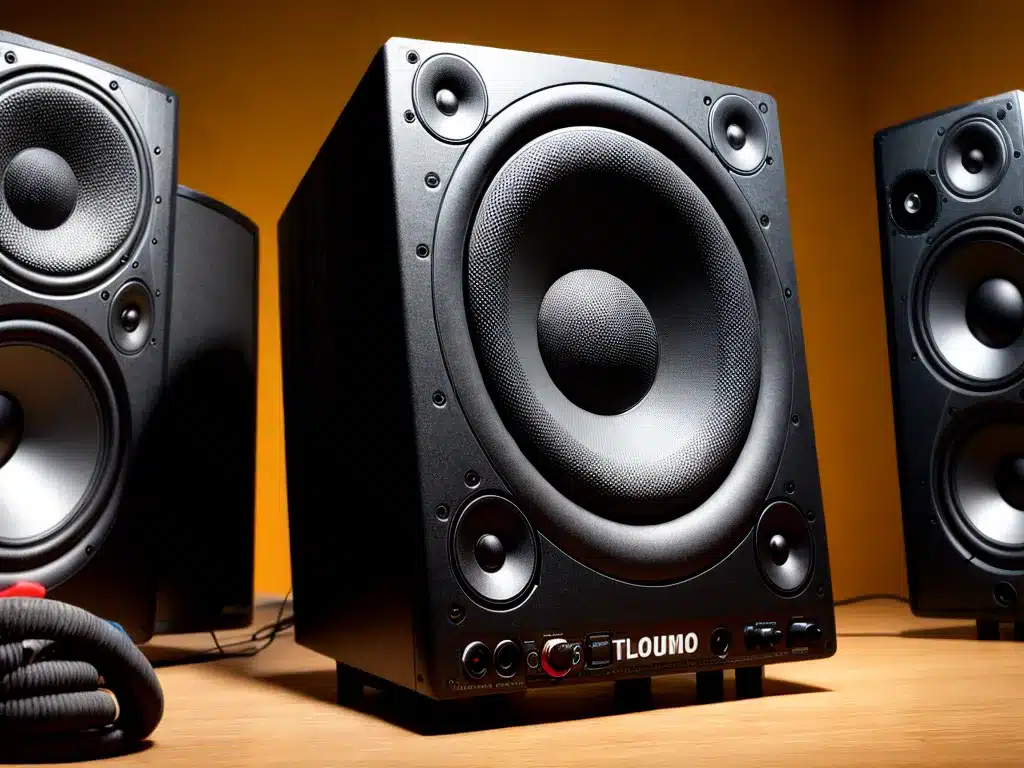
Check Physical Connections
The first step in troubleshooting any audio issue is to check that all of the physical connections are secure. Make sure cables are fully inserted into ports and connectors are snapped into place. Wiggling connections can cause intermittent sound, so secure any loose plugs and jacks. Also inspect cables for damage like frayed wires or bent plugs, and replace any defective cables.
Update Audio Drivers
Outdated audio drivers are a common source of sound problems. Go to your computer manufacturer’s website and search for the latest audio drivers for your model. Download and install the updated driver, then restart your computer. Updating drivers will resolve many sound glitches, audio distortion, and problems with no sound at all.
Adjust Volume Settings
One easy fix for audio issues is to check the volume levels. Make sure volume is turned up in both your operating system settings and on the speaker or headphone unit itself. Also unmute any muted settings. Some applications like web browsers may have separate volume controls, so check those as well.
In Windows, right-click the speaker icon in the system tray and select Open Volume Mixer. Make sure nothing is muted and levels are increased.
Set Default Playback Device
If you have multiple audio output devices like speakers and headphones, the incorrect device may be set as the default playback device.
In Windows, go to Sound settings and under Choose your output device, make sure the speakers or headphones you want to use are selected. This will route all system audio to that chosen output.
Check Playback Devices in Sound Settings
Another Windows settings issue that can prevent audio is if your playback device is disabled or not set as the default device.
Go to Sound settings > Sound Control Panel > Playback tab. Make sure the speakers or headphones are enabled and set as the Default Device. If you see red X’s or a disabled device, right-click and enable it.
Use Troubleshooter Tools
Windows, MacOS, iOS, and Android all include automated troubleshooters that can diagnose and fix common audio problems.
On Windows 10, go to Settings > Update & Security > Troubleshoot, then run the Playing Audio troubleshooter. This will check for driver issues, connectivity problems, and perform diagnostics.
Test with Headphones
To narrow down the source of the problem, try using a pair of headphones plugged into your computer or mobile device. If headphones work properly, then the issue is with your speakers or speaker setup. Crackling speakers, no sound from one side, or balance issues point to a hardware problem with the speakers, cables, or amplifier.
Restart Computer and Devices
Restarting your computer, mobile device, app, or audio hardware is a basic fix that resolves temporary glitches and resets configurations. Power cycle amplifiers and receivers as well. After restarting, check if sound is restored. Many minor audio bugs can be fixed with a simple restart.
Update Apps Causing Issues
Problems isolated to a single app like no audio in videos or games may be caused by a buggy app version. Check for app updates in your platform’s app store and install any available fixes and patches. The update may resolve app-specific sound issues.
Disable Audio Enhancements
Some sound cards and software include audio enhancements like virtual surround sound, equalizers, voice clarity, and spatial effects. Try temporarily disabling all audio enhancements to see if they are the cause of buzzing, echo, or distorted sound.
Re-enable enhancements one by one to isolate the problematic setting. Update drivers if available for your sound card software.
Following these audio troubleshooting steps should help resolve common sound issues like no sound, stuttering, crackling audio, balance problems, and more. If the problem persists, further troubleshooting may be needed for hardware replacement or a deeper OS reconfiguration.












